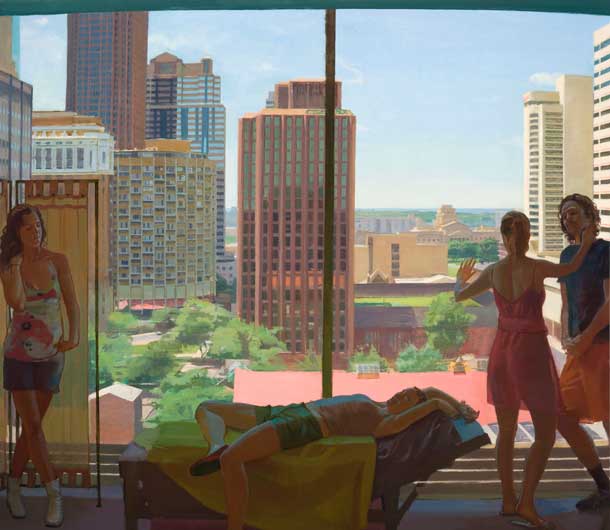
Scott Noel, Telemachus and the Sirens, 2011, oil on linen, 78 × 90 inches Courtesy of Gross McCleaf Gallery, Philadelphia, PA
click here for a larger view
OBSERVATION AND INVENTION: THE SPACE OF DESIRE at the Pennsylvania Academy of the Fine Arts
Curated by Scott Noel
January 21 – April 6, 2014
Reception: Wednesday, February 12, 5 – 7 p.m.
Panel Discussion: Thursday, February 13, 6 – 8 p.m.
Samuel M.V. Hamilton Building
School of Fine Arts Gallery
Exhibition webpage
|
Featuring the work of:
|
||
|
|
|
OBSERVATION AND INVENTION: THE SPACE OF DESIRE
essay by Scott Noel
Works of art are sometimes worthy to be recommended as beautiful. If I like the painting, the lyric, or the music, I try to describe its qualities in ways that make my pleasure sharable and concrete. Here, my description reaches for analogies in other fields of experience: the picture is vivid like noonday sunlight; the language flows or dances; the music evokes the emotion of lost love. If I’m especially sensitive to an art form, my enthusiasm for a work challenges me to address qualities which make the prose or choreography exemplary within the medium itself. So our responsiveness to beauty in art seems to point in at least two directions: toward an experience of the world and toward the world of artistic precedent.
When visual art became conscious of itself as an enterprise in ancient Greece it was first described as mimesis–the imitation of nature. At some point, what the Greeks called the phenomena–the fleeting realm of appearances–became the stimulus for works of sculpture and painting. The phenomenon most favored was the human body. Greek sculptors and painters set out to get as close to the appearance and presence of a specific human physique as their evolving analytic tools would permit. The study of the body as a coherent anatomical structure, traditions of proportion and visual organization derived from architecture and a deep awareness of sculptural precedent from Egypt, Persia, and Assyria all fed the effort to rescue a beautiful male or female body from the solvent of time in the ark of a work of art.
Human beings have always found beauty in the world like the beauty the Greeks located in the human body. But when beauty and mimesis are linked, the making of art plunges into history, becomes competitive and challenges practitioners to wrestle with questions of change and progress. Egypt produced isolated works which rivaled Greek naturalism, but without the teleological engine of mimesis, Egyptian art remained for millennia an unchanging vocabulary of forms. The dialectical tendency in Greek thought set in motion the perennial tides of change we experience in the contrast between Renaissance and Baroque, classical and romantic, modern and post-modern; a dynamic established between 450 and 250 BCE.
The artists in this exhibition are connected by their commitment to direct observation as a threshold to making paintings. The act of observation generates challenges and scruples in the making of pictures which connect the artists to the earliest practitioners engaged in the contest of mimesis. Appearances can be assessed and measured and the rightness of an assertion of color or proportion judged because the phenomena are infinite in their variety but not arbitrary. Somehow we recognize rightness and one of the attractions of observational painting is the way visual truth is experienced as surprise.
But what are the particular truths or beauties observation releases into art? A painter’s insights awakened through observation and making are never general, but highly specific. A good picture specifies something about the conditions of relationship that prevail in an appearance and embodies these discoveries in the physical terms of the painting itself. A felt beauty in the world has to discover an equivalent beauty in terms of the medium. From the outset, mimesis couldn’t be copying, but a reconfiguring of experience in terms of sculpture, painting, or drama. In this sense, observation–a close attention to the phenomena–has been necessarily imaginative.
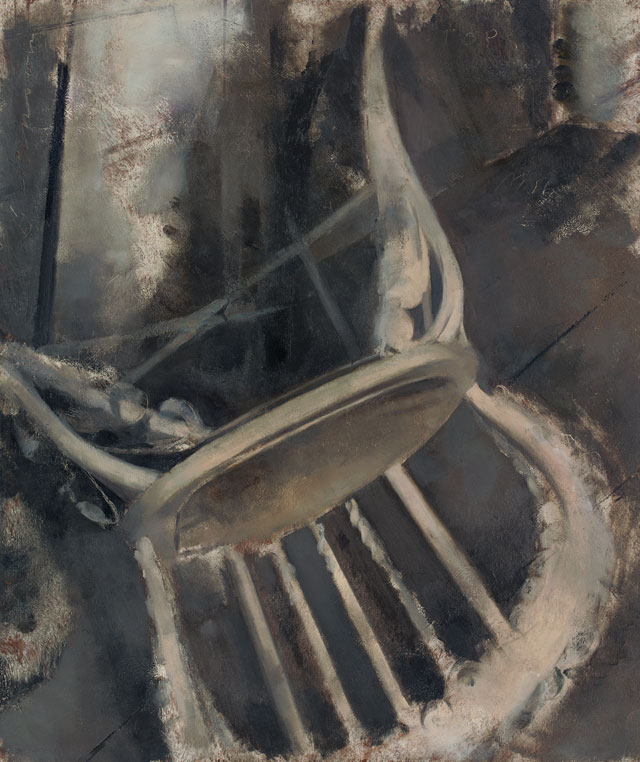
Edwin Walter Dickinson, Chair, Skowhegan I, 1956, oil on board, 15 1/2 × 12 1/2 in. Courtesy of the Pennsylvania Academy of the Fine Arts, Philadelphia
One of America’s greatest artists, Edwin Dickinson, devoted most of his practice to observational painting, but his work is rarely described as realist. Realism implies a set of expectations about the look of the world which Dickinson was at pains to challenge. Chair, Skowhegan I is scrupulous in its use of perspective and tonal modeling to picture an upside-down chair, but the outcome of the painting is not the rehearsal of a visual fact but release into an upside-down world with its own delightful and unforeseen physics. Dickinson was a generous, open-minded man, but he described realism as a “bum aim.” He also speculated, at bottom, we all see the same information on our collective retinas. The variety and challenge which potentially exists in observational painting depends, in Dickinson’s words, on “what a thought had done to the sight.”
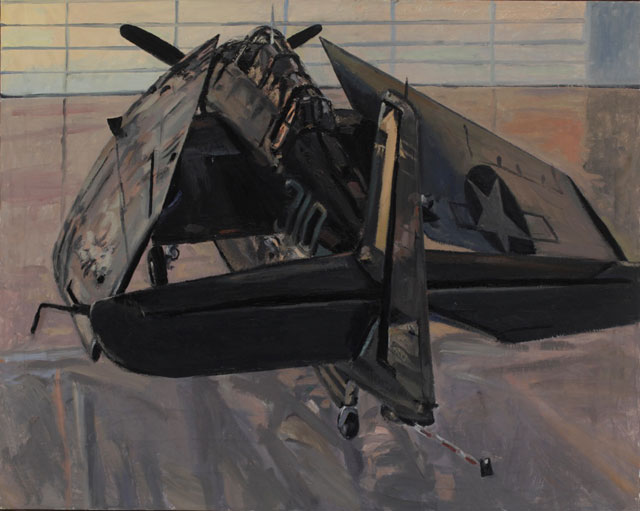
George Nick, Folded Avenger, 2006, oil on linen, 40 × 50 in. Collection of the artist
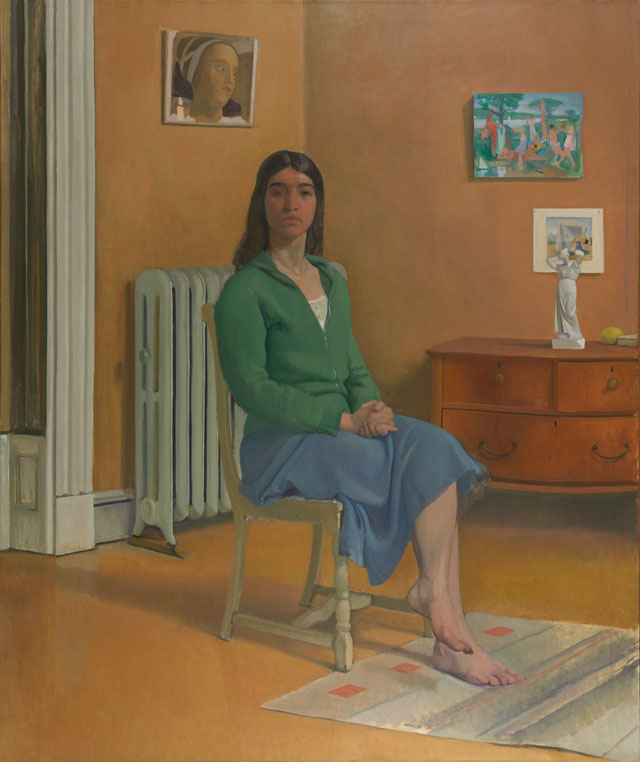
Lennart Anderson, Portrait of Barbara S, 1976–77, oil on canvas, 72 1/8 × 60 1/4 in.
Courtesy of the Pennsylvania Academy of the Fine Arts, Philadelphia
Edwin Dickinson is a unifying passion among the artists in the exhibition. George Nick and Lennart Anderson studied with Dickinson in the 1950’s and a number of other artists in the show learned about Dickinson through these influential masters. The younger painters in the show might humorously be thought the great-grandchildren of Dickinson’s influence. Influence in art is an elusive thing because no one in the show really paints like Edwin Dickinson. The more obvious influences might be Degas, Morandi, Vuillard, Lopez-Garcia or Fairfield Porter. Dickinson’s real influence is the poetic space his work discovers within the strange rigors of observational painting. This space was something the Greeks first glimpsed when they enshrined mimesis as an aspiration while recognizing the interpretation of nature as entangled with the contingency of an individual point of view and fraught with the longing for beauty. In art, I’ve come to call this intersection of self and world the space of desire.
Scott Noel
Selected work from the show, including many from the Perceptual Painter’s group
(Please see the end of the article for a pdf of the show’s catalog.)
Perceptual Painters is a group of painters who share a common core of sensibilities. The group was formed by Brian Rego with David Campbell in 2008. These two Pennsylvania Academy of the Fine Arts educated painters created the initial nucleus of the group among fellow MFA graduates at PAFA including Andrew Patterson Tutschka, husband and wife Tim Conte and Victoria Barnes, Aaron Lubrick, and John Lee. All of these painters worked closely with painter and PAFA professor Scott Noel. Scott Noel joined the group in 2009, along with fellow PAFA professors (and married couple) Carolyn Pyfrom and Peter VanDyck in 2011. Another segment of the group includes Neil Riley, a professor hailing from Columbus College of Art and Design and his students, Aaron Lubrick, David Jewell, and Matt Klos. The most recent additions to the group include Tom Walton and Erin Raedeke who were invited to join in 2012. Tom was a student of Scott Noel’s at PAFA and Erin was a fellow undergraduate student with Victoria Barnes and Tim Conte at Indiana University. Since the formation of Perceptual Painters, the group has been dedicated to painting, exhibiting, and teaching.
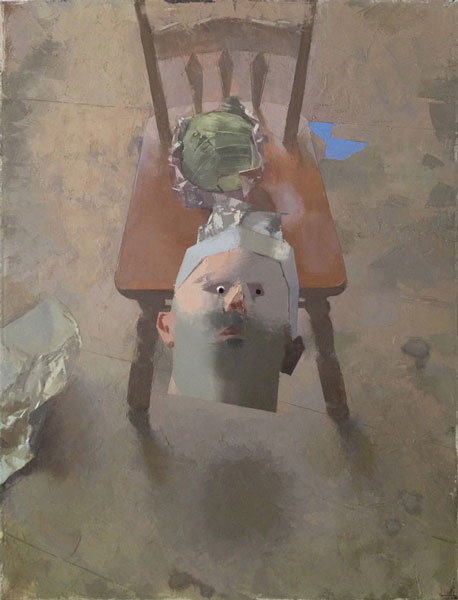
David Campbell, 2nd Attempt at My Future Brain, 2013, oil on linen, 26 × 34 in.
Collection of the artist
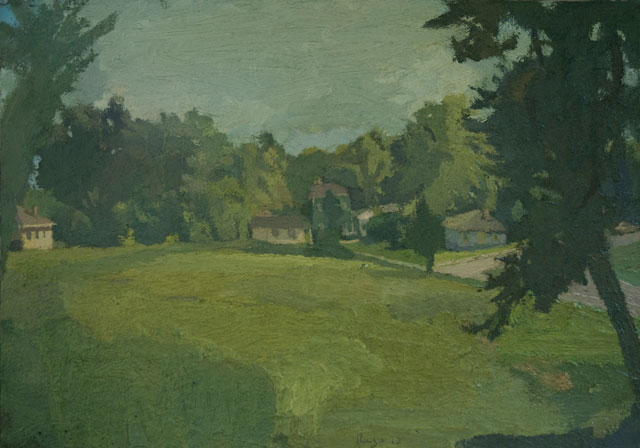
Brian Rego, Millwood Field, 2013, oil on board, 14 × 20 in.
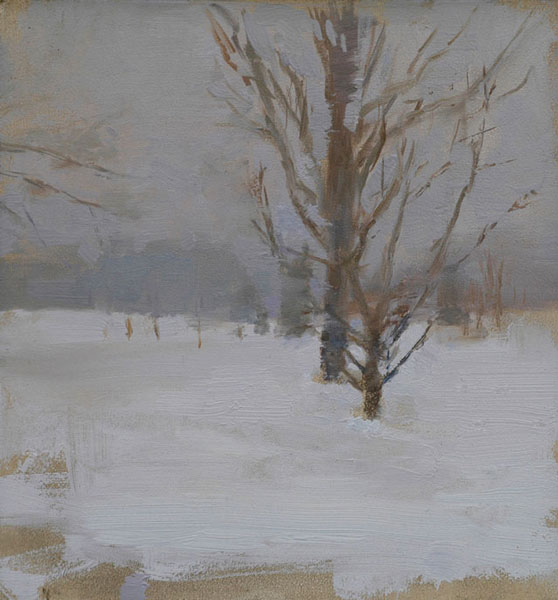
Neil Riley, Winter Grey, 2010, oil on panel, 8 × 8 in.
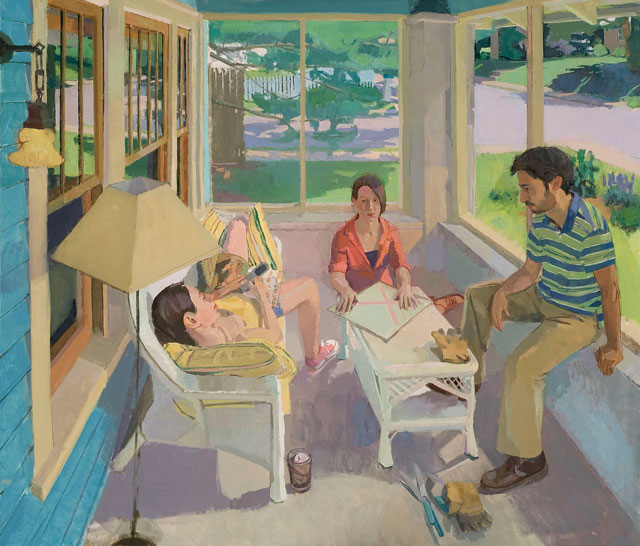
Tim Kennedy, July, 2007, oil on linen, 48 × 56 in.
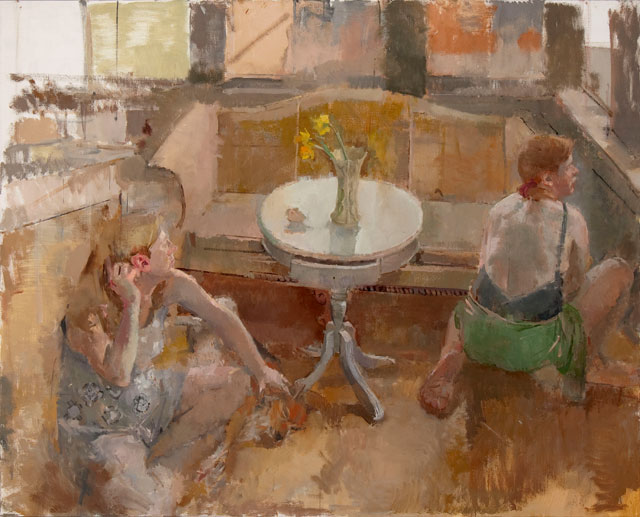
Eve Mansdorf, Crouch, 2007, oil on linen, 48 × 60 in
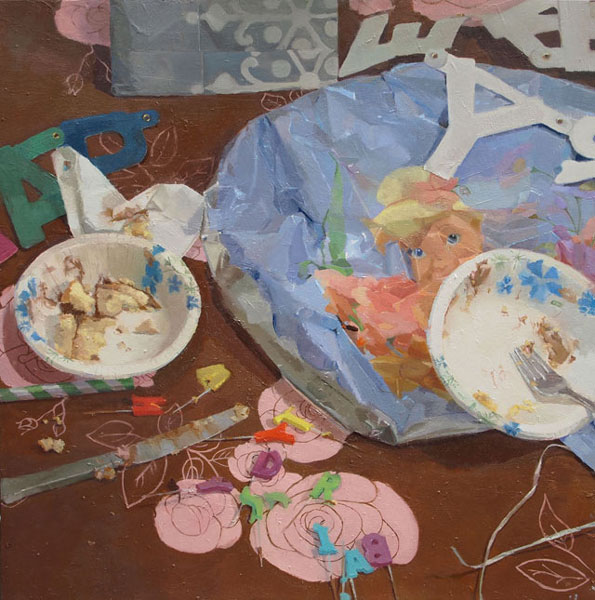
Erin Raedeke, The Party is Over, 2013, oil on board, 24 × 24 in.

Philip Geiger, Noa Asleep, 2012, oil on board, 18 × 24 in.
Elizabeth Geiger, Night Music, 2012, oil on linen, 40 × 28 in.
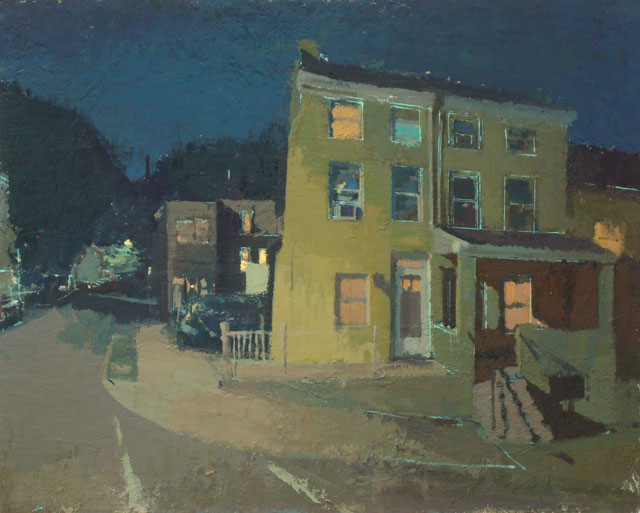
Peter Van Dyck, Cotton Street at Night, 2013, oil on linen, 24 × 30 in.
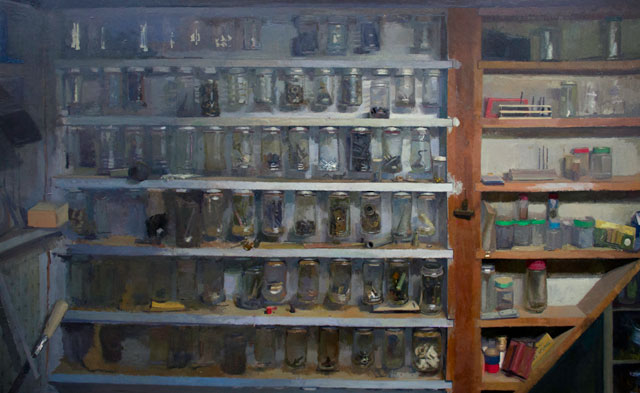
Matt Klos, 120 Vessels, 2012–13, oil on panel, 30 × 48 in.
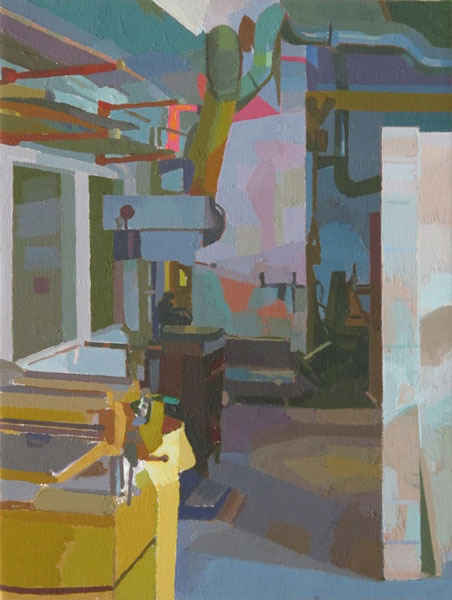
John Lee, Woodshop, 2013, oil on linen, 16 × 12 in.
Link to the pdf catalog with all artist works.

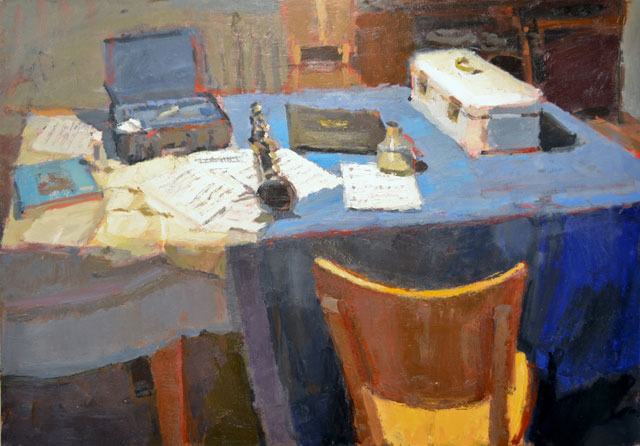




5 women and 15 men. This doesn’t represent the range of artists working in this manner.
No it certainly doesn’t; and what a shame if that’s the particular lens used to view this show. However, one of my favorite painters, in my top ten actually, is Gwen John, and not because she happened to be a female. Can we ever get past this dualism and start really looking at paintings by painters?
This show is at PAFA. More than half of the students are women. It is a shame that women artists are disregarded and saying so is so easily dismissed. I think the school should be aware of the message they are sending to their young women artists.
Deer anon,
I think PAFA is well aware of the message that they are sending to their young women artists. Just last year PAFA dedicated the entire first floor of their museum to a show called “The Female Gaze” which included works from over 150 female artists. Here’s a link to the show they featured on their website incase you missed it: http://www.pafa.org/femalegaze/
Ironically, your post is trivializing the very issue you are trying to bring attention to.
-Chewy
Dear Chewy,
Two things:
1. “The Female Gaze” was Linda Lee Alter’s private collection. It was donated to the Academy and the Academy exhibited part of it. The end. They didn’t have a hand in supporting any of the artists in the collection, many of whom are Academy grads. What they did was receive the donation and exhibit it. The collection was already all women, so that wasn’t PAFA’s choice. It was the collector’s choice.
2. Exhibitions of only women are a “correction.” They are a correction of shows where women are a minor presence, like this one. Many women artists, myself included, would like “all women shows” to be unnecessary.
Thanks, Anon
Hi Anon,
1. Not exactly sure what you mean by ‘supporting’? The article above mentions that Scott Noel curated the show based generally on the artists’ interest in Edwin Dickinson, whom Lennart Anderson and George Nick studied with. Unfortunately Dickinson didn’t have many famous female students. Besides the approach to observational painting, it appears the show was also curated loosely on direct and indirect connections that were made through a lineage of teaching, all starting with Dickinson.
2. I think that’s a fair point, but I’m not sure if I agree that the women in this show have a minor presence. I judge “presence” based on the power of the work, not necessarily by comparing the ratio of women to men. And by looking at the images above, I’d say Eve Mansdorf and Erin Raedeke are representing painting with a major presence.
It is unfortunate that women have been discriminated against by the art world. But I can tell you that some of my favorite painters, living and deceased, are female. But that’s honestly the last thing I notice.
Cheers,
-Chewy
Chewy,
When a women criticizes an institution (or anything) for being sexist, you MAY listen, not argue. As a man you really don’t need to have a voice on this subject. Period. This goes for any time a person from a marginalized group brings up an issue that affects them.
You are not entitled to express an opinion when it comes to groups you are not a part of.
Is this a definition of apartheid?
Were there a preponderance of women in the exhibition, I doubt a male would have raised the question. What about the number of African-Americans or Latinos?
I get your point, but positive action trumps drawing lines in the sand every time.
Not to stir the pot but why isn’t “Anon” producing some exhibitions, making something happen?
Thank you, Mr. Groff, and the Staff at Painting Perceptions for posting Scott Noel’s essay and the Exhibition images. I’m certain that everyone involved in the show is very appreciative for the promotion.
Scott and Larry, Thank you very much for the link to the pdf catalog for this show. What a treat!